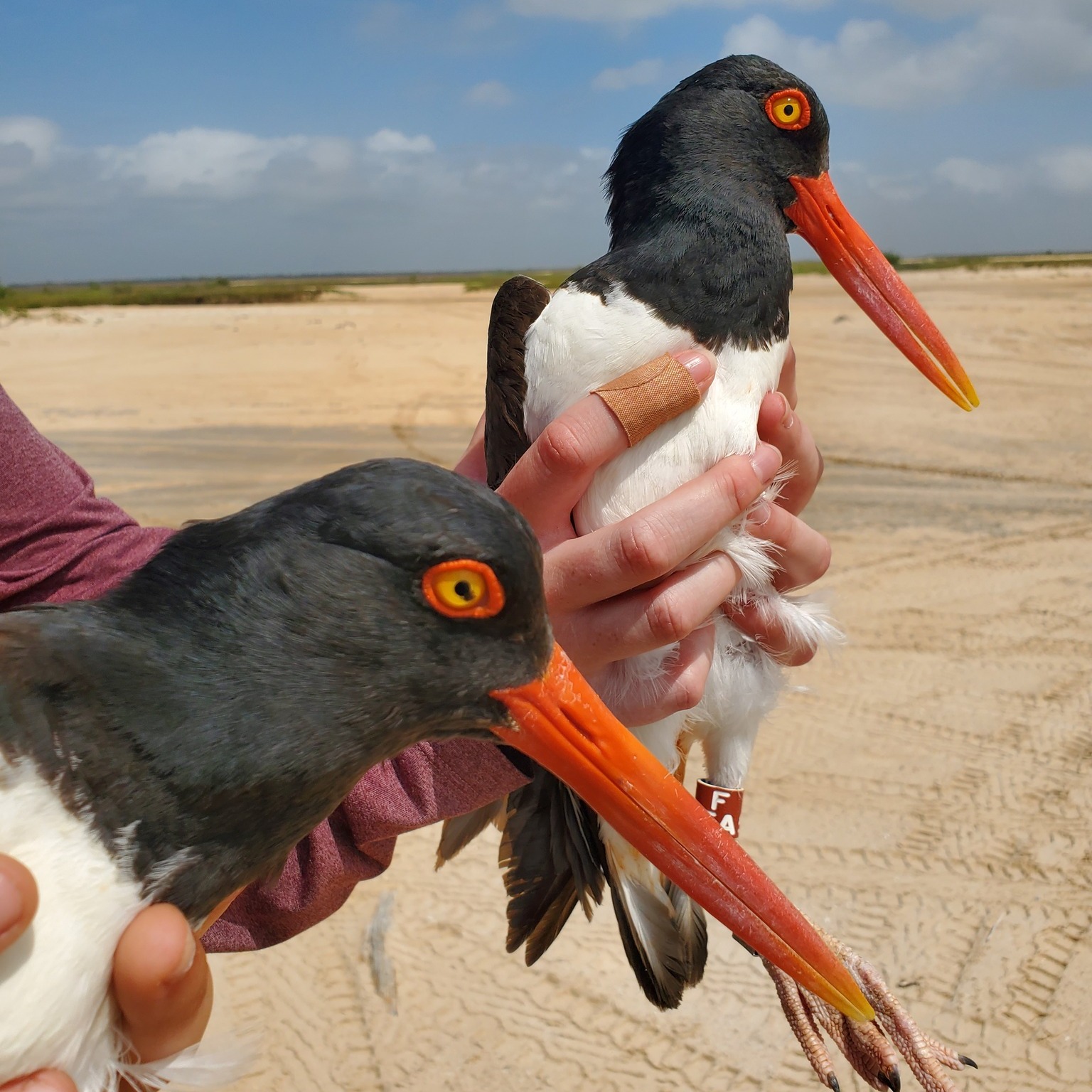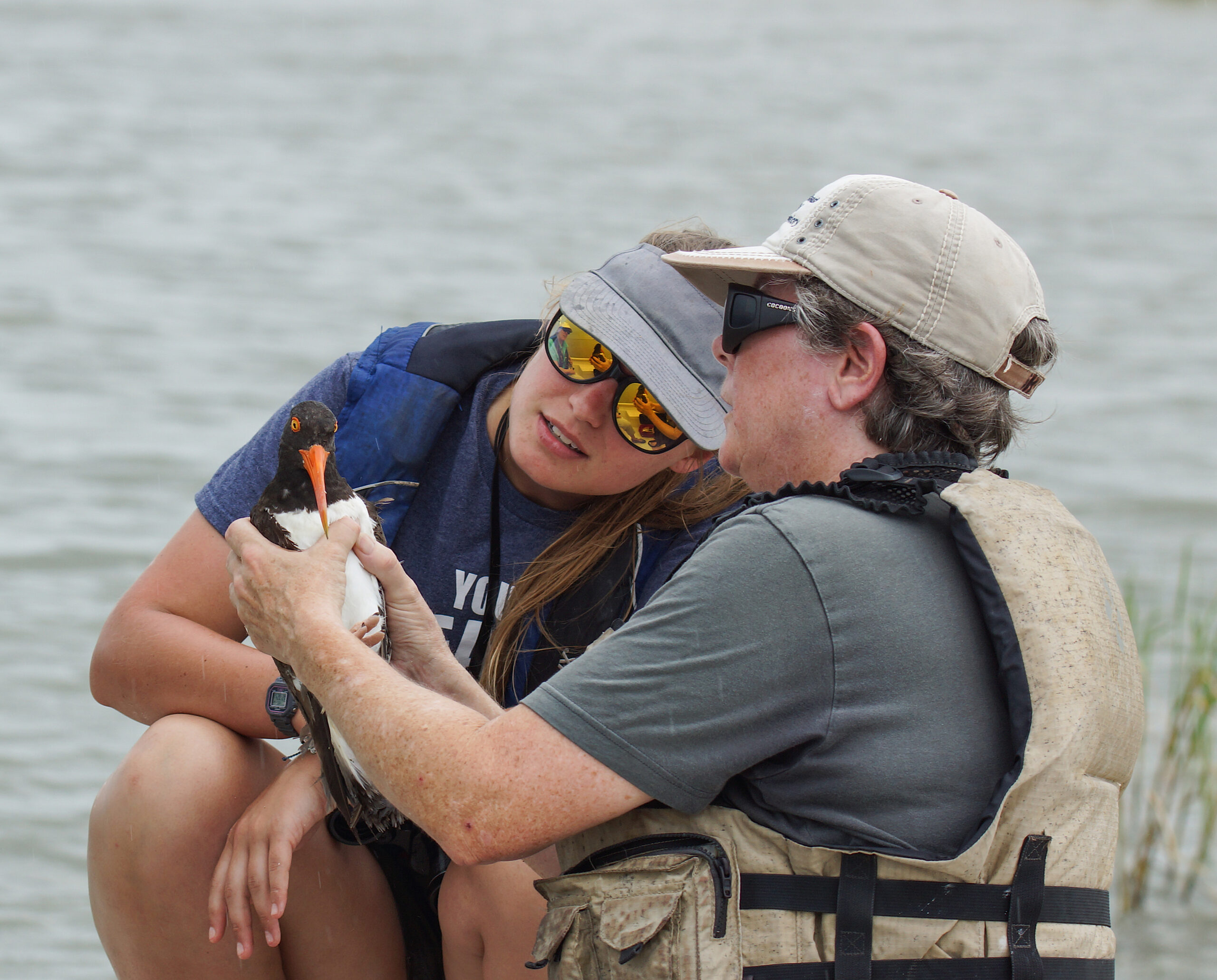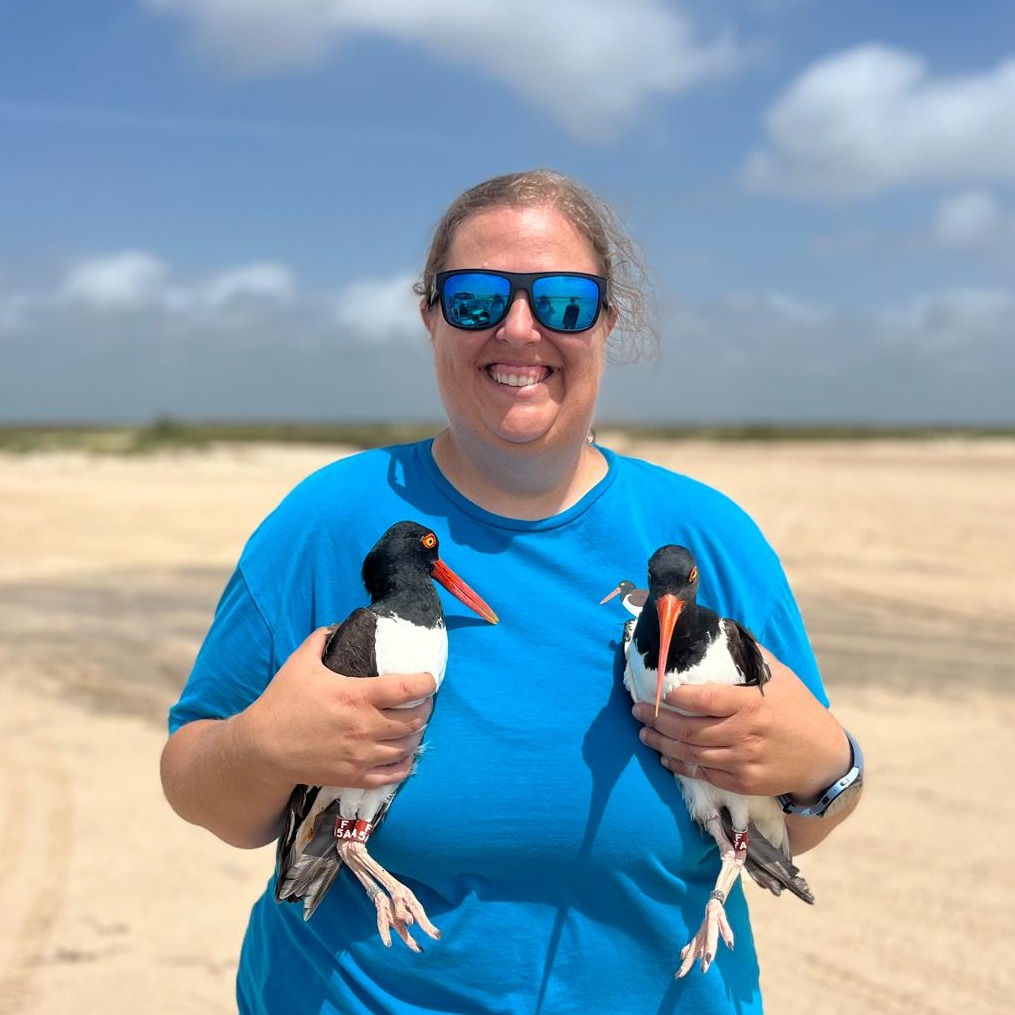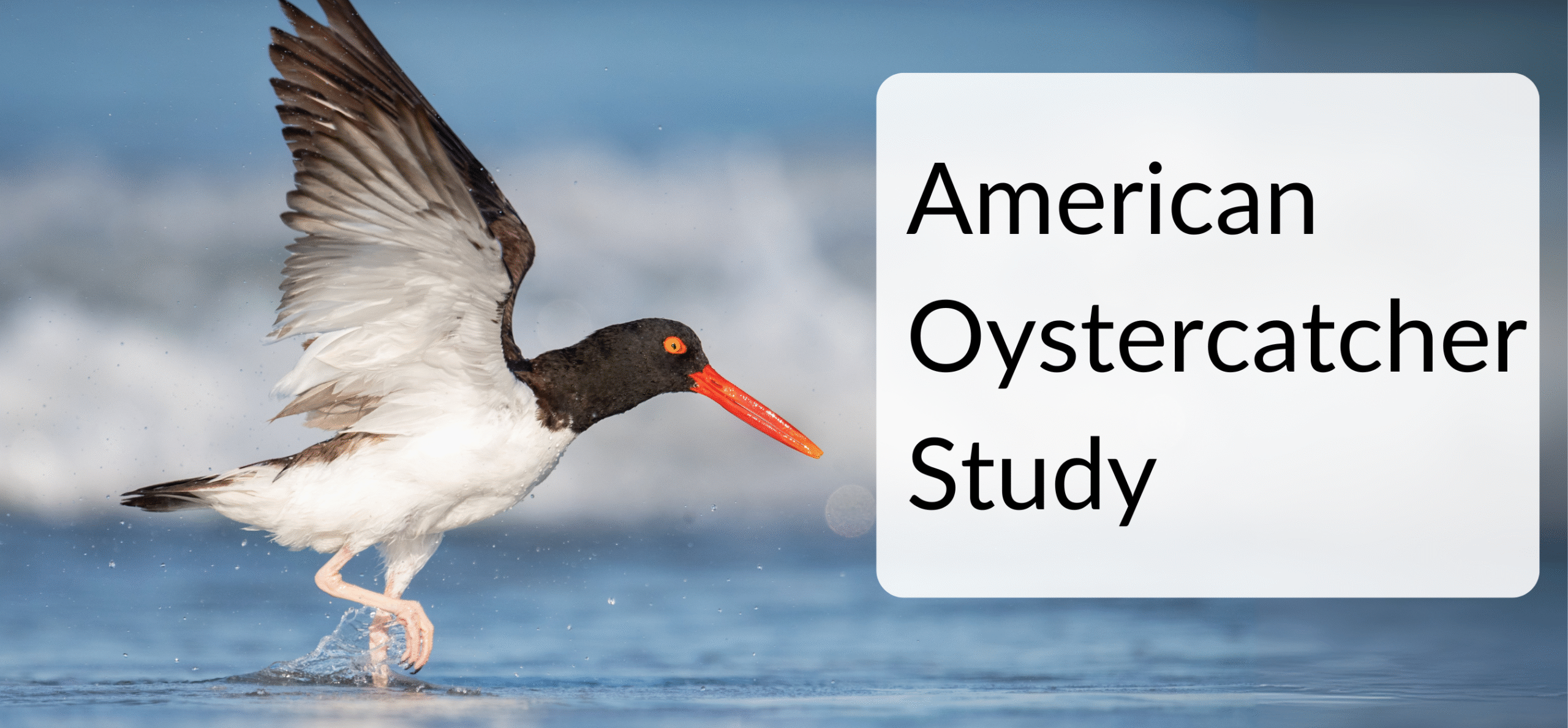
Project Abstract
Gulf Coast Bird Observatory is conducting ongoing research on the American Oystercatcher (Haematopus palliatus palliatus). We are investigating the status of the western Gulf population of American Oystercatchers, a migratory species of high concern in the U.S. Shorebird Conservation Plan.
Although much was known about the life history traits and threats to Atlantic Coast Oystercatchers, little was known about the challenges faced by this species in the western Gulf until we began our investigation. As a result of our work, we have gained much knowledge about the life history of Gulf Coast Oystercatchers.
Western Gulf Oystercatchers prefer to nest on bay islands. They are subject to overwash, predation, and human disturbance. Because they nest on islands near or within Laughing Gull colonies, avian predation is a much greater threat than mammalian predation and pairs nesting on islands without large Laughing Gull colonies fare better than those on larger islands unless there is a significant weather event that causes nests on smaller islands to be overwashed. Human disturbance from recreational boaters and fisherman exacerbates the gull predation problem because it causes eggs and chicks to be without parental protection. The few pairs we have found nesting on the mainland or on islands that are connected to the mainland at low tide have been subjected to a number of predators other than Laughing Gulls including: coyote, opossum, and domestic cat.
This project is coordinated by Dr. Rebecca Bracken, Conservation Research Director, and Dr. Susan Heath, Research Associate. GCBO has worked with three graduate students on this project to date, with a fourth upcoming, and a synopsis of each of their results is below.
Alexandra Munters, M.S. Texas Statue University 2014
Nest Site Selection by American Oystercatchers (Haematopus palliatus) on the Upper Texas Coast
Lianne Koczur, M.S. Texas A&M University Kingsville 2013
Reproductive Success of the American Oystercatcher in Texas
Amanda Anderson, M.S. University of Houston Clear Lake 2014
The Factors Affecting Productivity and Parental Behavior of American Oystercatchers in Texas
From 2011 to 2016, Texas Oystercatchers were banded with two identical maroon color bands with a two character alphanumeric code in white above the leg joint and a single metal band on the lower right leg. In 2017 we began using three character alphanumeric codes in a triangle pattern. Click here for a complete list of oystercatchers banded in Texas.
You can follow along with our field season from mid-February through July on the GCBO Blog
Project Partners:
Texas A&M University
Texas State University
Texas A&M Kingsville
University of Houston Clear Lake
Environmental Institute of Houston
Funding:
National Fish and Wildlife Foundation
ConocoPhillips
U.S. Fish and Wildlife Service Coastal Program
George and Mary Josephine Hamman Foundation
Jacob and Terese Hershey Foundation
The Trull Foundation
Matagorda Bay Mitigation Trust
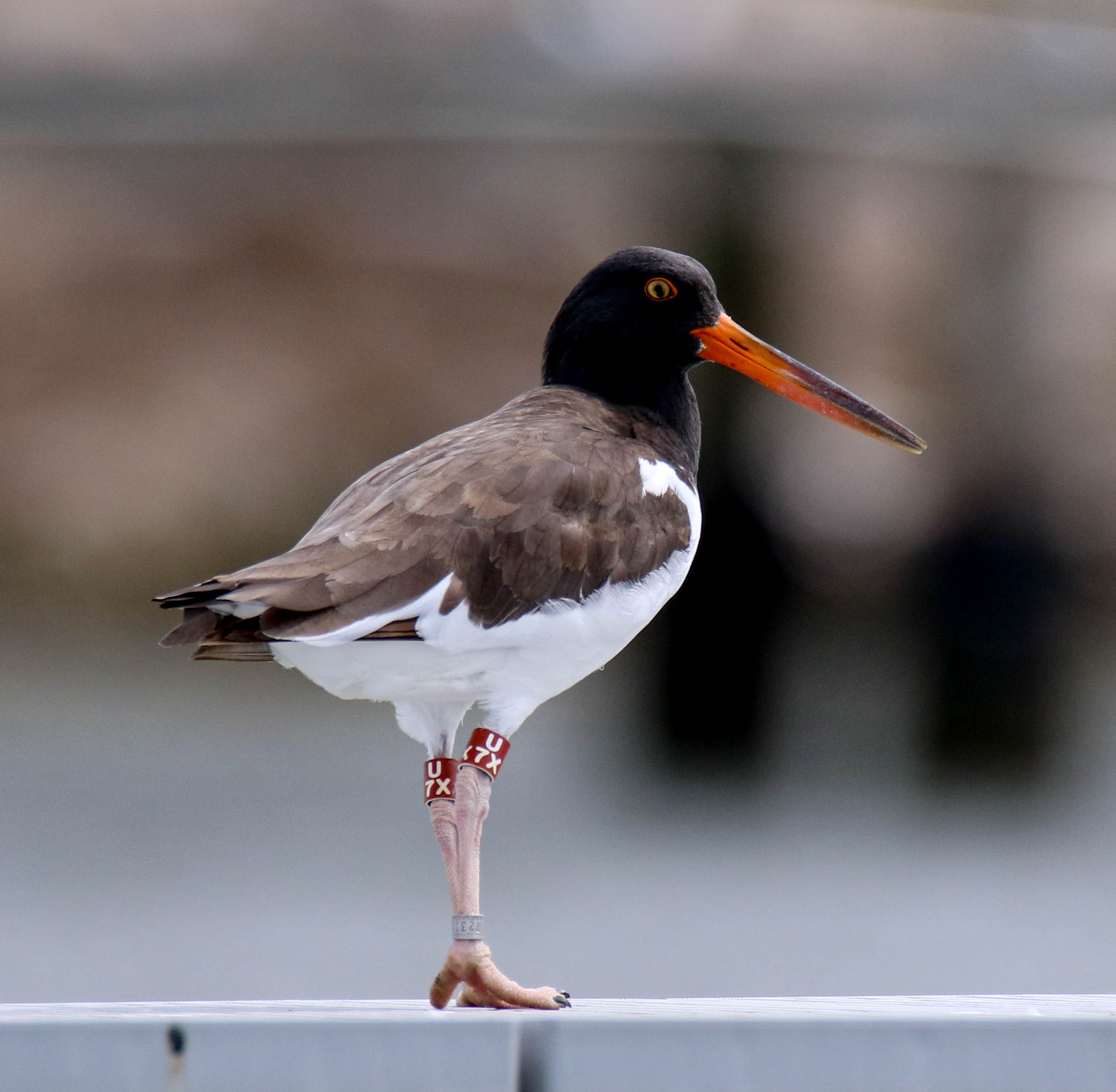
Texas Banding Scheme:
Upper left: maroon color band with white codes
Lower left: no band
Upper right: maroon color band with white codes
Lower right: USFWS metal band

